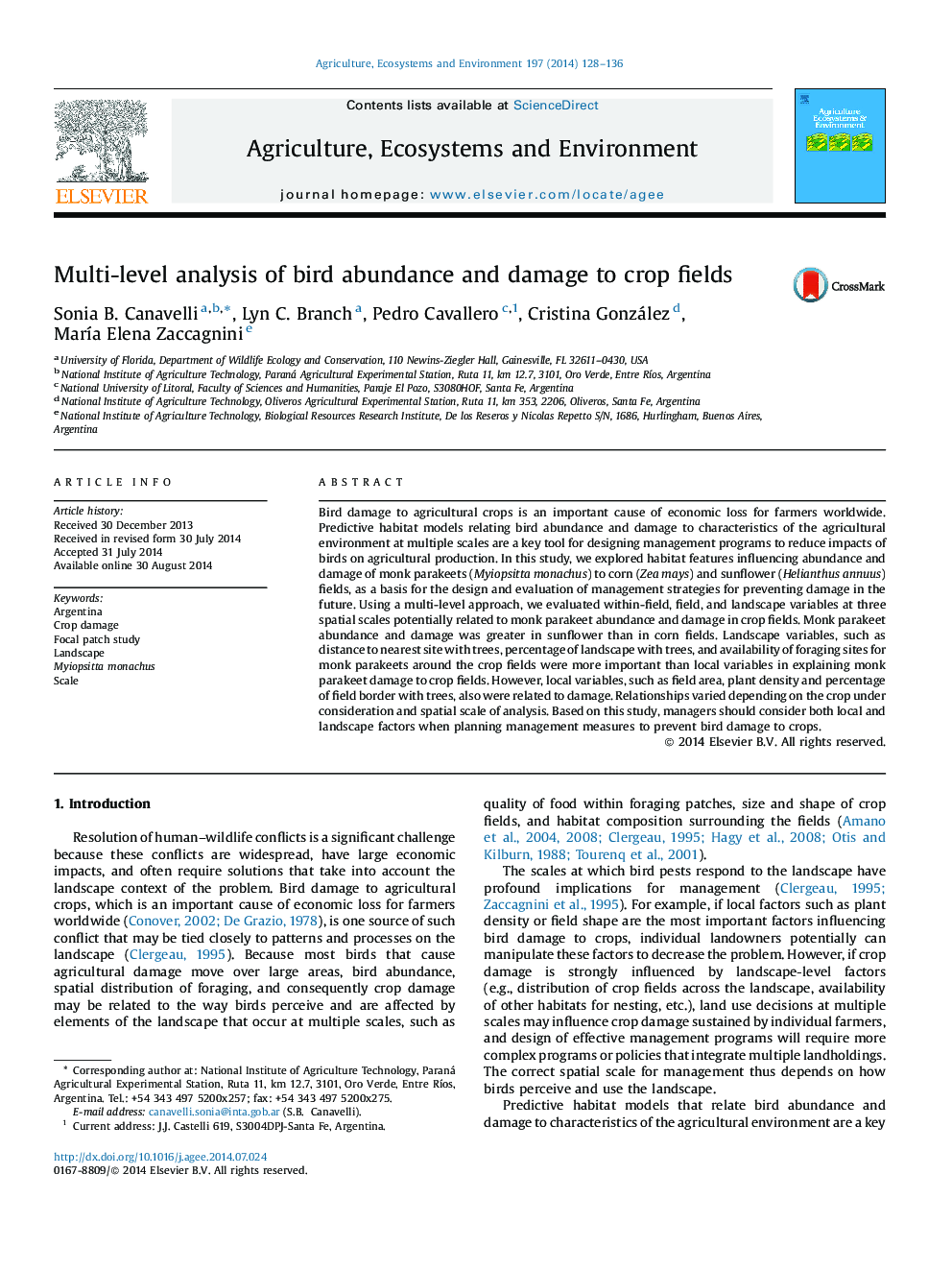| Article ID | Journal | Published Year | Pages | File Type |
|---|---|---|---|---|
| 2413815 | Agriculture, Ecosystems & Environment | 2014 | 9 Pages |
•Local and landscape variables were evaluated simultaneously with a multi-level approach.•Environmental variables explained crop damage better than bird abundance.•Crop damage was related to both landscape and local variables.•Models with landscape variables performed better than models with only local variables.
Bird damage to agricultural crops is an important cause of economic loss for farmers worldwide. Predictive habitat models relating bird abundance and damage to characteristics of the agricultural environment at multiple scales are a key tool for designing management programs to reduce impacts of birds on agricultural production. In this study, we explored habitat features influencing abundance and damage of monk parakeets (Myiopsitta monachus) to corn (Zea mays) and sunflower (Helianthus annuus) fields, as a basis for the design and evaluation of management strategies for preventing damage in the future. Using a multi-level approach, we evaluated within-field, field, and landscape variables at three spatial scales potentially related to monk parakeet abundance and damage in crop fields. Monk parakeet abundance and damage was greater in sunflower than in corn fields. Landscape variables, such as distance to nearest site with trees, percentage of landscape with trees, and availability of foraging sites for monk parakeets around the crop fields were more important than local variables in explaining monk parakeet damage to crop fields. However, local variables, such as field area, plant density and percentage of field border with trees, also were related to damage. Relationships varied depending on the crop under consideration and spatial scale of analysis. Based on this study, managers should consider both local and landscape factors when planning management measures to prevent bird damage to crops.
